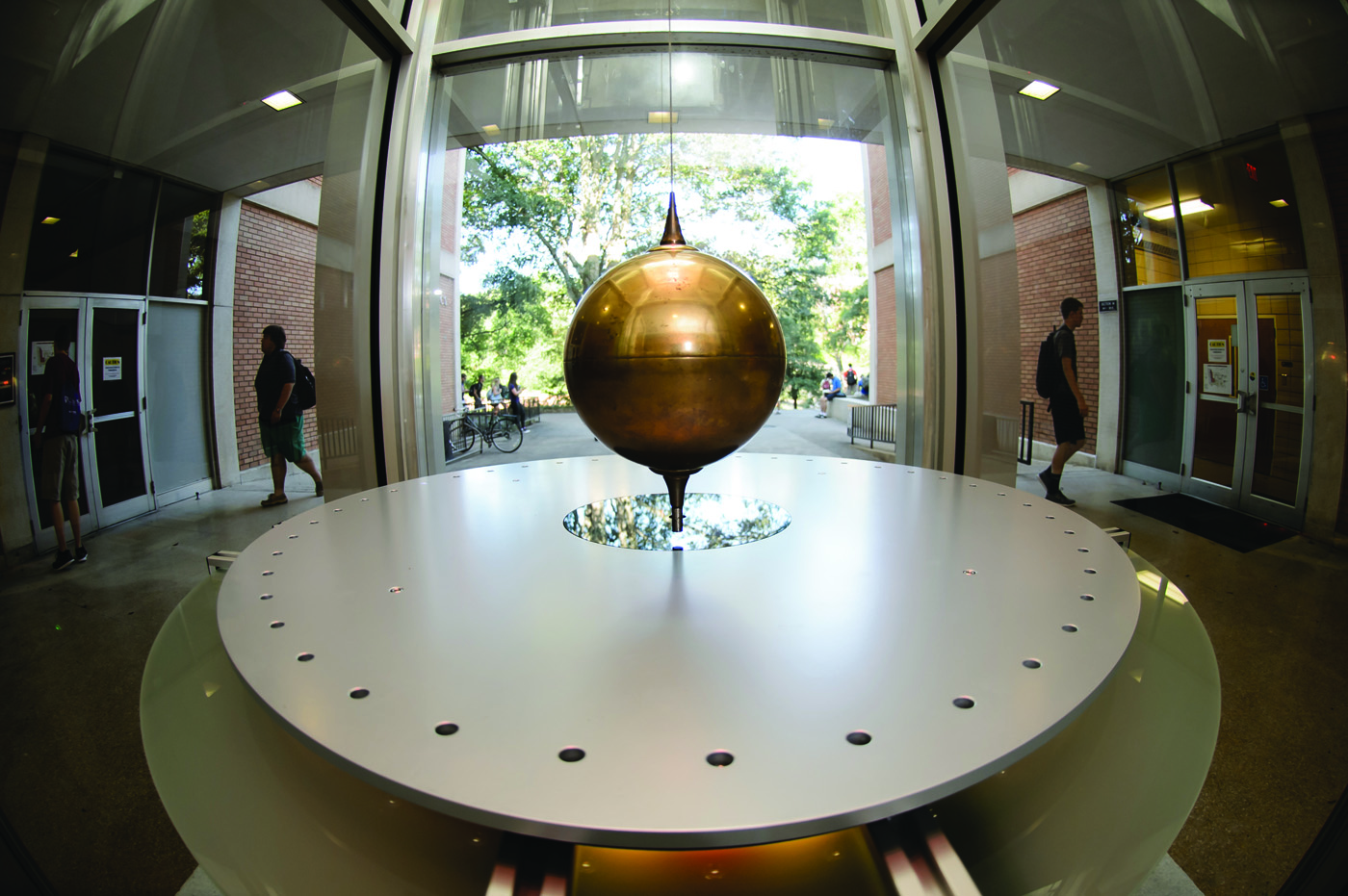Back in the swing
 Photo courtesy of Ashley N. Jones.
Photo courtesy of Ashley N. Jones.Clemson’s Foucault pendulum, idle for most of a decade, is back in full swing.
First designed and built in the 1960s by the late Professor Albert R. Reed, the new version of the pendulum still dangles Reed’s brass-covered lead bob from the wire he artfully braided from nineteen strands of stainless steel. He suspended the pendulum in a four-story, glass-and-brick tower between Kinard Laboratory of Physics and Martin Hall, where it swung for thirty years, propelled by magnets to offset air resistance and friction in the wire, before age and disrepair took a toll.
Over the last several years, physics students built a scale model of the pendulum, updating its design with an optical sensor, a microprocessor, and digital controls to track the course and activate the magnets. The model worked, so Chad Sosolik, associate professor of physics, put together a team of Creative Inquiry students and set about rebuilding the original.
They got funding from the student senate—a gift from the class of 2013—and help from Mike Chappell, a Clemson alumnus (1983), who built and installed most of the electronics along with hardware supplied by his employer, Izumi International in Greenville.
The Foucault pendulum is named for the French physicist Jean-Bernard-Leon Foucault (1819-1868), who built the first one to demonstrate that the Earth rotates on its axis. Unlike the pendulum in a grandfather clock, which swings in two dimensions, the bob of an oscillating Foucault pendulum travels a three-dimensional circuit, completing its precession in one “pendulum day,” which is forty-two hours at Clemson’s latitude.
The pendulum, Sosolik says, is a perpetual, visible reminder of some of the forces that govern our world. “We hope people will come to see this and learn how it works,” he says.
For a feature on Chad Sosolik’s research, please read a pipe full of star power.


